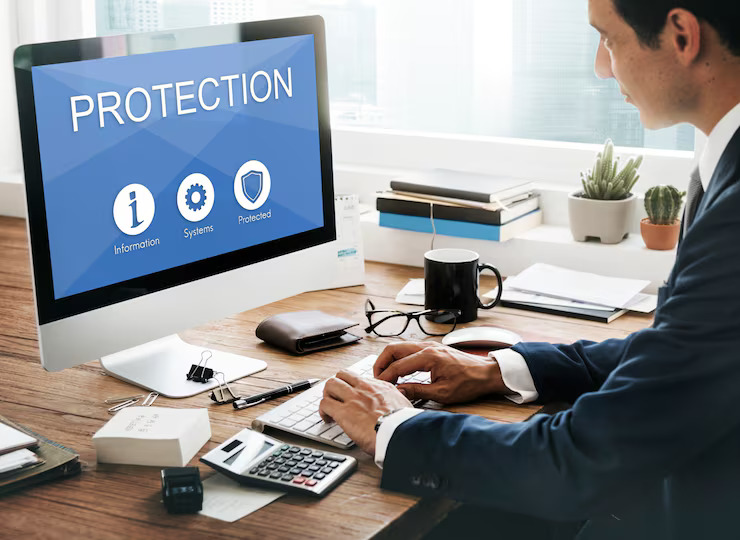Why Speed and Security Are Critical in E-Commerce Web Development
Ecommerce has become the backbone of modern business. It is transforming the way people search and buy. Nowadays, companies rely on their internet presence to draw in and retain clients. But in the fast moving digital world having an online store is no longer enough. Customers now want websites to load instantly and their personal data to remain completely secure.
A site that lags for even a few seconds risks losing impatient buyers, while one that fails to safeguard sensitive information risks losing customer trust altogether.Because of this, two factors, speed and security, have become important in the development of an effective e-commerce website. They have a direct impact on conversion, trust and long-term company growth in addition to improving user experience.
In this blog, we will explain why these two pillars are important for Ecommerce web development, how they impact customer trust and sales and the best practices businesses should adopt to stay ahead.
The Rising Expectations of Online Shoppers
Today’s customers expect more than just variety and convenience. They want instant gratification and absolute trust. Over half of users leave a website that takes longer than three seconds to load, according to Google. Similarly, studies reveal that more than 80% of buyers are hesitant to make a purchase from a website if they have concerns about the security of their payment.
The stakes for e-commerce companies are raised by these expectations. Customers could become frustrated with an online store that doesn’t prioritize speed, and they could stop trusting it entirely if it ignores security. Loss of sales and a tarnished reputation for the brand are the results of both.

Get Free Quote

Why Website Speed Is Non-Negotiable
1. Speed Affects User Experience:
The first impression of your ecommerce site is almost always its loading speed. A smooth, quick experience makes browsing fun and encourages customers to look into your products more. On the other hand a slow site, is the equivalent of walking into a physical store with long checkout lines and unhelpful staff, it pushes people away.
2. Speed Influences Search Engine Rankings:
Google and other search engines use page speed as a ranking factor. In addition to irritating users, a slow website has trouble ranking in organic search results. In competitive markets like fashion, electronics and home goods.
3. Conversion Rates Depend on Speed:
A famous study by Amazon once revealed that for every 100-millisecond delay, they lost 1% in sales. While your store may not operate at Amazon’s scale, the principle remains: faster websites convert better. Customers are far more likely to complete their purchase when product pages.
4. Mobile Commerce Makes Speed Even More Important:
Speed optimization is more important than ever because of the rise in mobile shopping. An unoptimized website can feel extremely sluggish because mobile devices frequently use slower networks. For this reason, a lot of prosperous companies now prioritize mobile design and use technologies like AMP to keep clients interested while they’re on the go.
Why Security Is the Foundation of Trust
If speed keeps users browsing, security keeps them buying. Every transaction in e-commerce includes private information, login credentials, credit card numbers, and sensitive data. Potential customers can become skeptical at the first hint of weakness.
1. Protecting Customer Data:
Data breaches can destroy businesses. They damage customer confidence in addition to causing financial losses. Customers want to know if their personal information is protected by secure servers and strong authentication processes.
2. Building Consumer Trust:
Security is psychological as well as technical. Displaying SSL certificates and clear privacy policies tells users that “You can trust us with your money.” That trust becomes a competitive advantage In a crowded digital marketplace.
3. Compliance with Regulations:
Governments and regulatory bodies are more strict about consumer data protection. From India’s DPDP Act to RBI’s strict payment security rules compliance is not optional .”Failure to adhere can result in fines, lawsuits and business shutdowns.
4. Preventing Fraud and Cyberattacks:
Ecommerce websites are prime targets for hackers. A simple security breach can disrupt operation for weeks, without proactive measures. By putting security first, companies protect their continuity as well as their clients.

The Interplay Between Speed and Security
At first glance, speed and security may seem like separate concerns. In reality, they’re deeply interconnected.
- Slow security measures hurt speed. For example, poorly implemented firewalls or outdated encryption methods can slow down websites.
- Fast but insecure sites risk collapse. A quick loading site that lacks proper security won’t retain customers once a breach occurs.
The goal in e-commerce development is to strike a balance between performance and protection. Modern technologies like content delivery networks, optimized SSL certificates and advanced caching systems help developers achieve both without compromise.
Best Practices for Optimizing Speed
1. Leverage Content Delivery Networks:
CDN speeds up your website’s content delivery worldwide.
2. Clear Images and Media:
High resolution images sell products, but oversized files slow websites down. Use compression tools and modern formats to maintain quality without sacrificing speed.
3. Reduce HTTP Requests and Optimize Code:
A site functions more smoothly when its code is clear and effective. While bundling assets reduces the number of requests that browsers must make, minifying HTML reduce the file size.
4. Implement Lazy Loading:
Only the visible portions of a webpage load first thanks to lazy loading; other elements load as users scroll. This significantly increases perceived speed.
5. Invest in Quality Hosting:
Your hosting provider plays a huge role in performance. Opt for dedicated or cloud hosting solutions optimized for e-commerce traffic rather than cheap shared hosting.


Best Practices for Ensuring Security
1. Always use HTTPS:
It is now mandatory to have an SSL certificate. In addition to encrypting communications, HTTPS communicates reliability to both search engines and customers.
2. Keep Platforms and Plugins Updated:
Outdated platforms and plugins are common entry points for hackers. Regular patches and updates eliminate loopholes.
3. Use Multi Factor Authentication:
It is difficult for hackers to access sensitive systems when an additional layer of security is added to logins.
4. Frequent audits of security:
Finding weak points is helped by routine vulnerability scans and penetration tests.
5. Secure Gateways of Payment:
Work only with trusted payment processors and ensure compliance to protect financial data of customers.
The Business Case for Speed and Security
Investing in speed and security can give you a competitive edge and also prevent issues.
- Increased conversion rates: Quick websites close deals more quickly.
- Customer loyalty : Secure transactions create repeat customers.
- Reputation of brand : Companies known for reliability attract more positive reviews and referrals.
- Lower bounce rates : A secure and quick loading site keeps people engaged longer.
Simply put, speed and security directly influence revenue, retention and reputation, the two pillars of e-commerce success.


Emerging Trends to Watch
Expectations of consumers grow as technology advances. The following trends will influence e-commerce’s speed and security going forward:
- AI Powered Security : Machine learning algorithms that detect and prevent fraud activity in real time.
- Edge Computing : Reducing latency by processing data closer to users.
- Biometric Authentication : For safer and faster logins using fingerprints and facial recognition.
- Zero Trust Architecture : Treating every interaction as a potential risk until verified.
Conclusion
For ecommerce websites, speed and security are necessary. When combined, these two elements create a seamless shopping experience that offers clients comfort with every click. By using best practices, transparent media, and frequent security audits, businesses can provide both performance and protection without sacrificing either. In the end, reputation and long term growth are directly impacted by speed and security. Investing in these pillars will help ecommerce brands stay ahead of the competition.